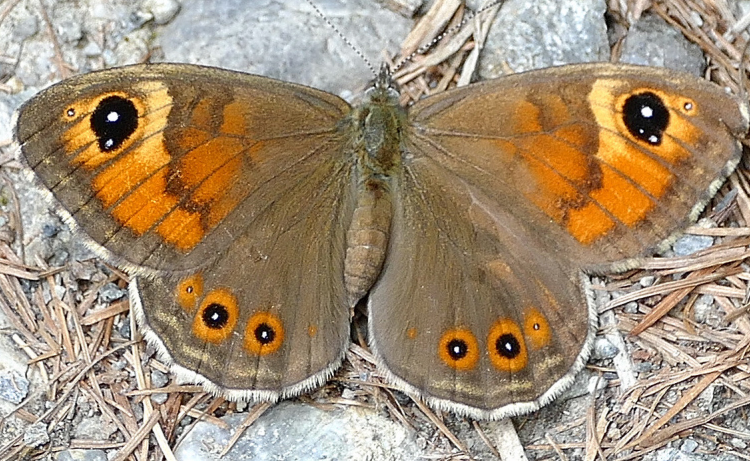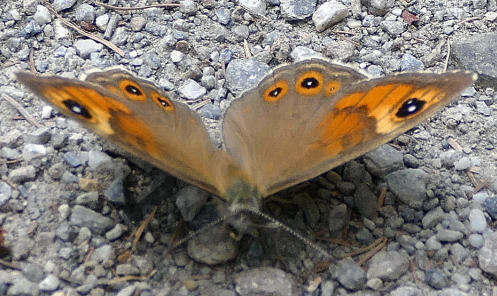Check the ingredients!
... live healthy!


| "Descrizione" by A_Partyns (12876 pt) | 2023-Sep-12 11:14 |
The butterfly Lasiommata maera L. belongs to the family Nymphalidae and lives in Europe, Asia, and America, where it can be found at altitudes between 500 and 1,800 meters. It is also known as the Large Wall Brown,

Prefers moist, wooded areas with alternating shade and sun.
It produces only one generation per year. The larvae feed on various grasses.
It adapts well to climate change, and climate change, which has brought increased temperature, increases its growth rate (1).

Distribution. Spanning from Europe, through Asia, and reaching North Africa, its geographical spread allows for a variety of habitats. These include grasslands, clearings within woodlands, and scrubby terrains.
Morphology. Medium in size, its intricate wing pattern is a mix of earthy tones. The orange-brown hue of the dorsal side with black patterns is contrasted by a mottled ventral side which boasts shades of grey, brown, and light orange, providing a perfect camouflage when at rest, especially against tree barks and ground litter.
Life Cycle. Embarking on a complete metamorphosis, the butterfly progresses from an egg to a caterpillar, then to a chrysalis before finally emerging as an adult. Each stage is meticulously adapted to its environment for optimal survival.
Dietary Habits. In its larval stage, it primarily feeds on various grass species. As an adult, it seeks nectar from a diverse array of flowers, allowing it to obtain essential nutrients and energy.
Conservation Status. The butterfly’s population trends vary by region. Factors such as habitat destruction, climate change, and changes in land use can influence their numbers. Their presence or absence can be a valuable indicator of the health of an ecosystem.

References____________________________________________________
(1) Gotthard K, Nylin S, Wiklund C. Individual state controls temperature dependence in a butterfly (Lasiommata maera) Proc R Soc B. 2000;267:589–593. doi: 10.1098/rspb.2000.1042.
| Evaluate |